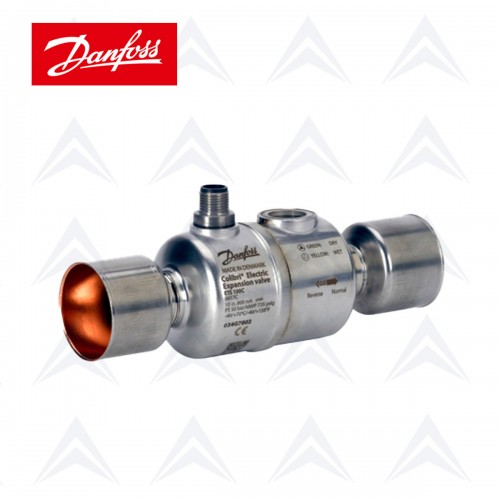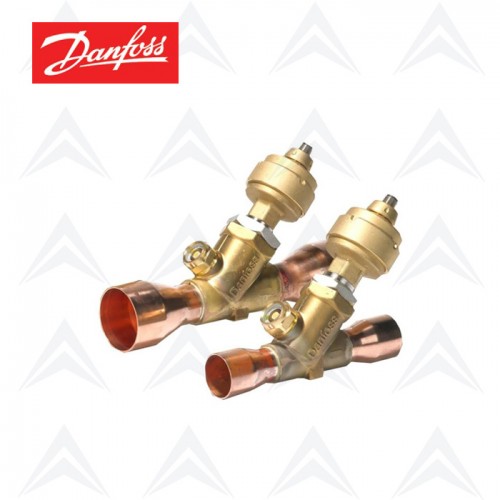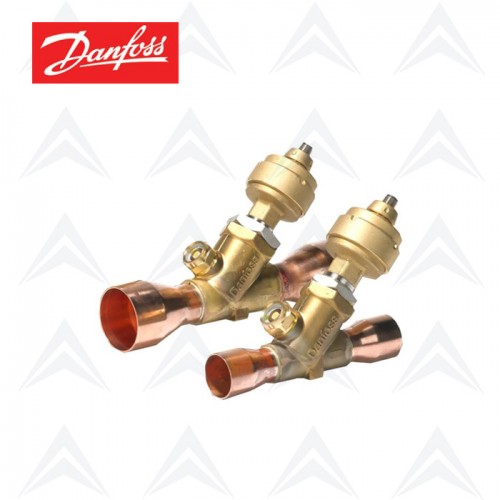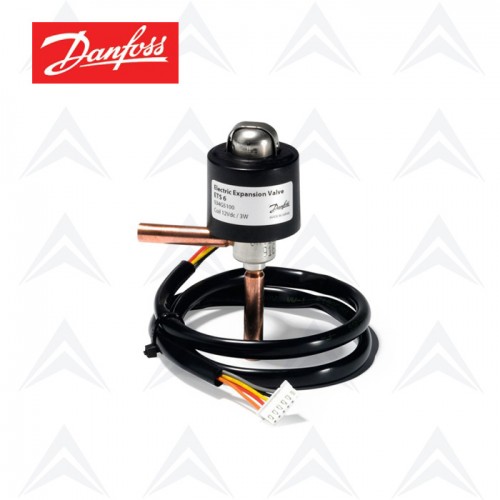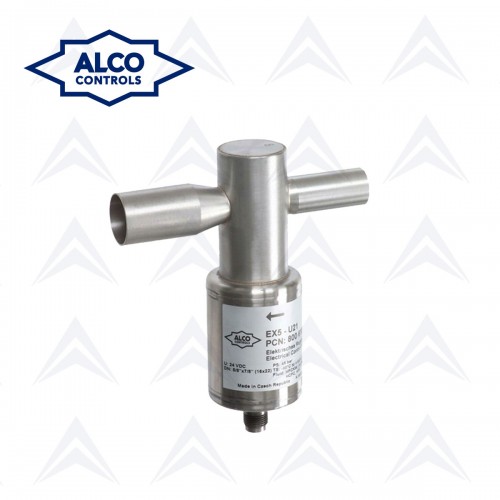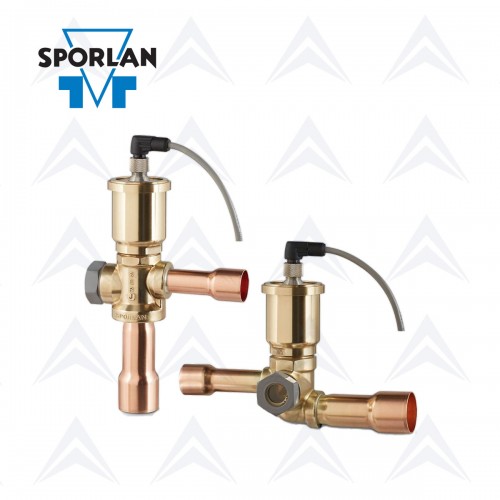Electronic Expansion Valves
In order to better understanding the function of an electronic expansion valve and its role in the refrigeration cycle, we will take a quick look at the reason of using the expansion device in the refrigeration cycle.
The role of an expansion valve in the refrigeration cycle
The expansion valve is one of the four main parts of a refrigeration cycle, which is installed at the outlet of the condenser and the inlet of the evaporator. The main function of this valve, which is also referred to as the expansion device, is to regulate the amount of required refrigerant to enter the evaporator.
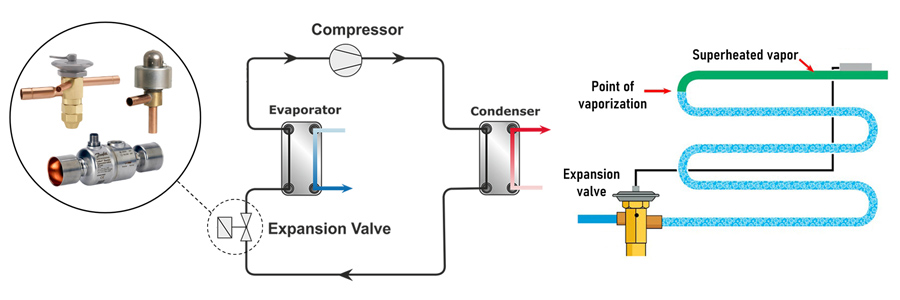
In fact, according to increase or decrease of the evaporator load, the valve adjusts the refrigerant flow entering the evaporator by keeping the superheat constant through opening and closing the path.
Different types of an expansion valve
In a refrigeration system, different types of expansion valves are installed depending on the symtem load, application, and allocated budget, which are:
- Capillary tube
- Thermostatic expansion valve
- Electronic expansion valve
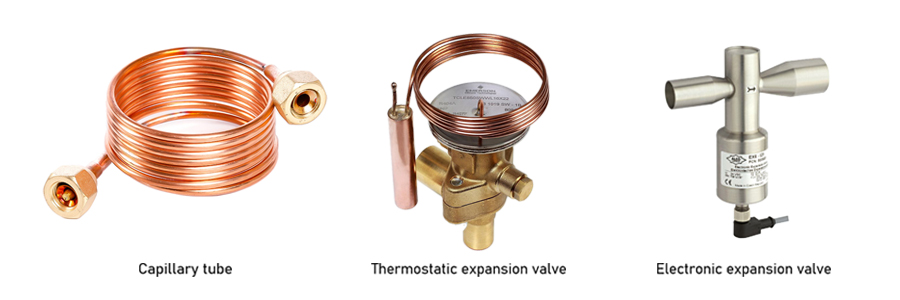
In the following, we will learn about the electronic expansion valve. how it works, advantages, etc.
The main components of the electronic expansion valve
To achieve better knowing about the components of the electronic expansion valve in a simple way, it should be said that the electronic expansion valve uses a magnetic stepper motor along with a coil that is located in the upper part of the valve. The stepper motor controls the position of the valve when energized.
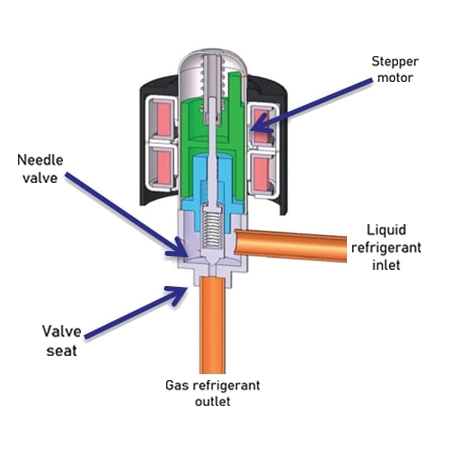
In the center of the stepper motor body, there is a permanent magnet that has a shaft that rotates under the influence of the magnetic field created by the coil and changing the direction of the magnetic field polarity.
Types of electronic expansion valves
According to the type of stepper motor, the electronic expansion valve is classified into two classes, uni-polar electronic expansion valve and bi-polar electronic expansion valve.
Uni-polar electronic expansion valve
Uni-polar type of electronic expansion valve has a two-phase uni-polar stepper motor and each phase has a central tap. These motors have five or six wires, of which four wires are related to the phases and the other two wires are related to the power supply, which may be joined together from the inside.
By connecting the phases to the ground, a magnet is created and the motor axis starts to move. Since it is possible to change the direction of the magnetic field without changing the direction of the current, the mechanism of these motors is very simple. Uni-polar motors have lower torque and efficiency than bi-polar type and are used for lower capacities.
Bi-polar electronic expansion valve
This type of electronic expansion valve has a bi-polar and two-phase stepper motor which consist of four wires. In this type of motor, the phases do not have a central tap, and the current passes through the entire coil. The current passing through the entire coil increases the torque of the coil.
In bi-polar motors, in order to reverse the direction of the magnetic field, the direction of feeding the coils must be reversed, which makes bi-polar motors have a more complicated circuit than the unipolar one.
Bipolar motors are used in the electronic expansion valve with higher capacity and more steps.

How does the electronic expansion valve work?
The main purpose of using the electronic expansion valve is to adjust the amount of superheat in the refrigeration cycle.
Electronic expansion valve and has more accurate and complicated structure than the thermostatic type.
In response to the signals sent by an electronic controller or valve driver, the motor opens or closes the valve and sends the appropriate amount of refrigerant into the evaporator. In this way, the driver controller receives the pressure and temperature signals which are sent by the sensors installed in the suction line.

According to the type of refrigerant and superheat setting, sends an electronic signal to open or close the valve until the amount of superheat remains constant.
Advantages of an electronic expansion valve
We can mention some advantages of using an electronic expansion valve in the refrigeration system as follow:
- The more accurate control of refrigerant entering the evaporator
- Fast and accurate response to changes in refrigeration load
- Better load overlap compared to thermostatic type
- Precise adjustment of superheat and reducing the possibility of liquid refrigerant migration to the compressor
- Reducing energy consumption

